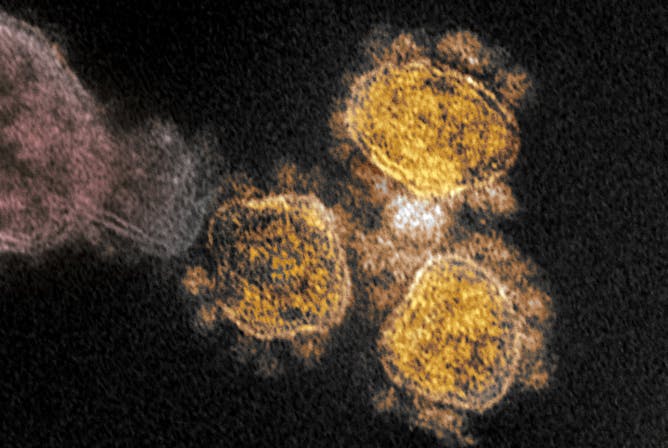|
President Joe Biden was sworn into office today, one day after the U.S. passed 400,00 deaths from COVID-19 and as news about new variants of the coronavirus spills out. We asked two researchers to describe what scientists do and do not know about mutations to the virus and what their emergence means for day-to-day safety precautions.
Bird-watching has become an attractive activity for many people spending more time at home during the pandemic. Based on data submitted by birders, a new paper studied the effect of light pollution on migrating birds, providing a number of insights on how cities can be more hospitable to birds, particularly during fall and spring migrations.
Space exploration is accelerating, making it one of the most dynamic areas in science but also opening up new legal issues. A professor of air and space law explains the significance of a newly passed law seeking to protect historical sites on the Moon, much as we already have at home on Earth.
Please reply to this email if there is a subject in science that you’d like the editorial team to investigate.
|

The new SARS-CoV-2 variant’s increased transmissibility is believed to come from a change in the spike protein, visible here in yellow under an electron microscope.
National Institute of Allergies and Infectious Diseases
Suresh Dhaniyala, Clarkson University; Byron Erath, Clarkson University
The new variant has been estimated to be 50% more transmissible. It's already been detected in at least 20 US states.
|

Tennessee warblers (Leiothlypis peregrina) breed in northern Canada and spend winters in Central and South America.
Kyle Horton
Frank La Sorte, Cornell University
Cities are danger zones for migrating birds, but there are ways to help feathered visitors pass through more safely
|

These astronaut footprints on the Moon aren’t protected yet.
NASA
Michelle L.D. Hanlon, University of Mississippi
Who cares what happens to bootprints on the Moon? All humans should. And thankfully the US Congress and president agree.
|
Other good finds
|
-
David Kennedy, Penn State
A biologist who studies the evolution of diseases explains what's different about the two new virus strains that have been found recently, and what that means for vaccine effectiveness.
-
Jonathan Runstadler, Tufts University; Kaitlin Sawatzki, Tufts University
COVID-19 has been found in pets, zoo animals and in a wild mink in Utah. Monitoring wildlife for COVID-19 is important for animals and humans, both of whom face risks from a jumping virus.
-
Eric LoPresti, Oklahoma State University
For some sand-dwelling plants, stickiness is a defense tactic that keeps predators at bay.
|
|